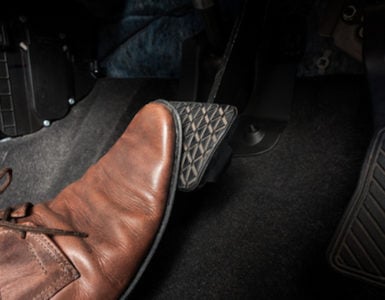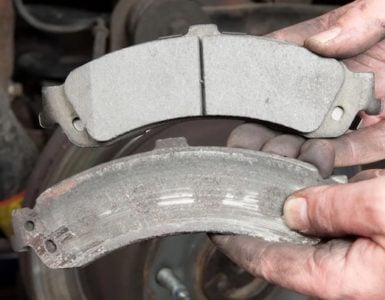There are significant differences between consumer brake pads and pad components manufactured for racing. In general, the differences have to do with the raw materials used, how those materials are mixed and matched to reach a particular performance metric, and how these individual combinations are layered into a final product.
What Racing Pads Are Made Of
Racing pads are fabricated from a number of hybridized compounds that include fillers, modifiers, and lubricants. These elements are layered across a thermal surface to help resist the heat that can degrade support components such as calipers. These layers also defend against brake fluid boil-over during heat cycles.
How Racing Pads Are Put Together
Pads are attached to metalized backing plates with adhesives and micro-studs. This ensures the pad’s friction surface, or puck, doesn’t delaminate and separate from the backing plate under load or heat cycle. From here, manufacturers also add grooves on the pad friction surface to allow for heat expansion while at the same time avoiding pad cracking and fritting.
Finally, manufacturers scorch each pad to remove excess resins, chemicals, and lubricants. This last step reduces the outgassing that can reduce friction.
For more information about inspecting brake pads in race cars, click here. And remember, when you’re looking to fit or retrofit your own racing brake pads, contact us for a consultation before you buy.





